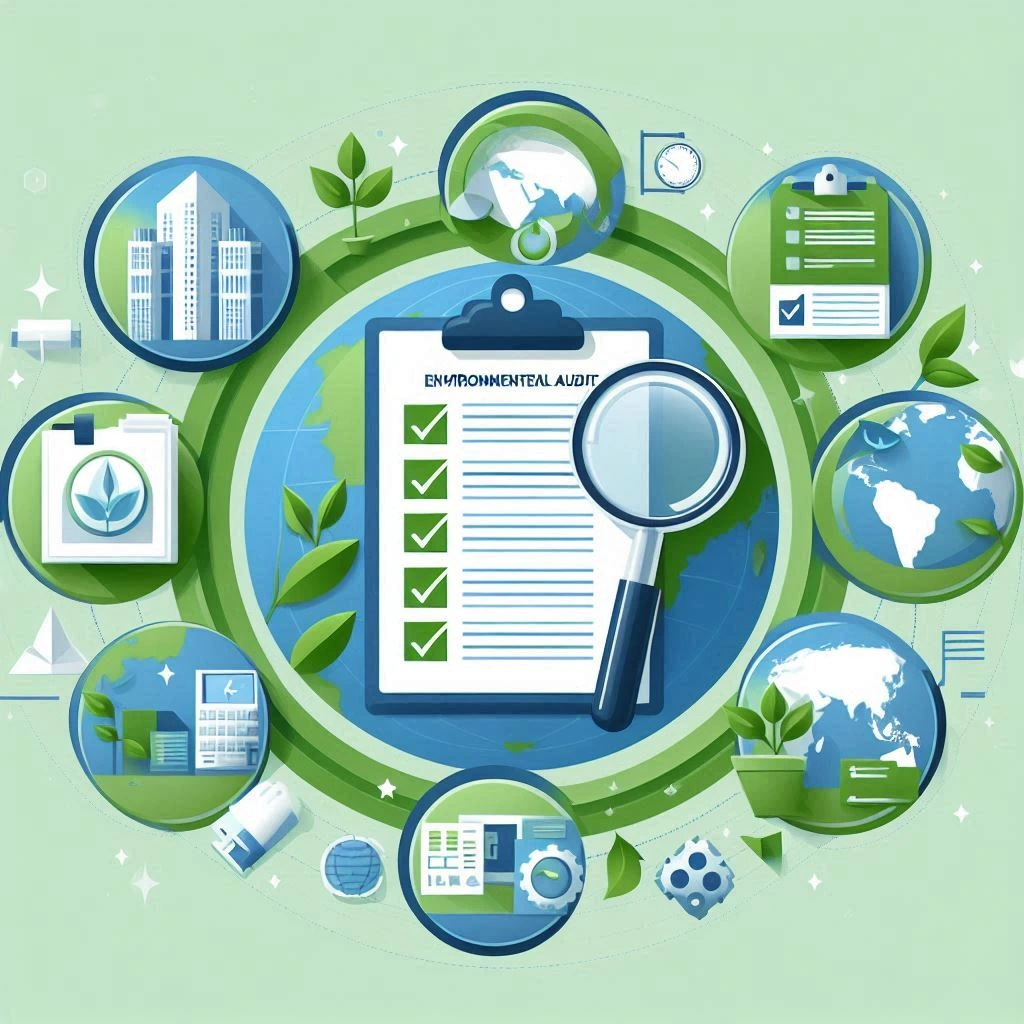Operational audits are a critical component of an organization’s internal audit framework, focusing on evaluating the efficiency and effectiveness of operations. These audits assess whether resources are being utilized optimally to achieve organizational goals while ensuring compliance with established policies and regulations. By examining processes, systems, and controls, operational audits help identify areas for improvement, mitigate risks, and enhance overall performance.
In recent years, the importance of sustainability in business practices has surged, driven by increasing regulatory pressures, stakeholder expectations, and a growing recognition of the environmental and social impacts of corporate activities. Companies are now expected to not only deliver financial results but also demonstrate their commitment to sustainable practices. This shift has led to the integration of sustainability metrics into various business functions, including operational audits.
The intersection of operational audits and sustainability initiatives presents a unique opportunity for organizations to align their operational efficiency with their sustainability goals. By incorporating sustainability metrics into the audit process, internal auditors can evaluate how well an organization is performing against its sustainability objectives. This integration not only enhances the relevance of the audit but also supports the organization’s broader mission of responsible and sustainable business practices.
Key points to consider include:
- Defining Operational Audits: Operational audits focus on assessing the effectiveness and efficiency of an organization’s operations, ensuring that resources are used wisely and that processes align with strategic objectives.
- Growing Importance of Sustainability: As businesses face increasing scrutiny regarding their environmental and social impacts, sustainability has become a key consideration in strategic planning and operational execution.
- Intersection of Audits and Sustainability: By embedding sustainability metrics into operational audits, organizations can better understand their performance in relation to sustainability goals, identify areas for improvement, and enhance accountability in their sustainability initiatives.
Incorporating sustainability into operational audits not only helps organizations meet regulatory requirements but also fosters a culture of continuous improvement and innovation, ultimately leading to long-term success and resilience in an ever-evolving business landscape.
Understanding Sustainability Metrics
In the context of operational audits, sustainability metrics play a crucial role in evaluating an organization’s environmental impact and operational efficiency. These metrics provide quantifiable data that can guide decision-making and enhance overall performance. Here’s a closer look at what sustainability metrics are, their relevance to operational performance, and how they align with organizational goals.
Definition of Sustainability Metrics
Sustainability metrics are specific measurements used to assess an organization’s performance in relation to environmental, social, and governance (ESG) criteria. They help organizations track their progress towards sustainability goals and identify areas for improvement. Some common examples include:
- Carbon Footprint: This metric measures the total greenhouse gas emissions produced directly and indirectly by an organization, typically expressed in carbon dioxide equivalents (CO2e). It helps organizations understand their contribution to climate change and identify opportunities for reduction.
- Waste Reduction: This metric tracks the amount of waste generated and the effectiveness of recycling and waste management practices. It is essential for organizations aiming to minimize their environmental impact and improve resource efficiency.
- Energy Efficiency: This metric evaluates the amount of energy consumed relative to the output produced. It is critical for organizations looking to reduce energy costs and lower their carbon emissions.
Relevance of Sustainability Metrics to Operational Performance
Integrating sustainability metrics into operational audits is vital for several reasons:
- Performance Improvement: By measuring sustainability metrics, organizations can identify inefficiencies and areas where they can improve their operations. For instance, tracking energy consumption can lead to initiatives that reduce energy use and costs, thereby enhancing overall operational performance [5].
- Risk Management: Sustainability metrics help organizations identify potential risks related to environmental regulations and stakeholder expectations. By proactively addressing these risks, organizations can avoid penalties and enhance their reputation [4].
- Stakeholder Engagement: Transparency in sustainability metrics fosters trust and engagement with stakeholders, including customers, investors, and employees. Organizations that demonstrate a commitment to sustainability are often viewed more favorably, which can lead to increased loyalty and support [2].
Alignment with Organizational Goals
Sustainability metrics not only serve as performance indicators but also align closely with broader organizational goals:
- Strategic Alignment: Incorporating sustainability metrics into operational audits ensures that sustainability initiatives are aligned with the organization’s strategic objectives. This alignment can enhance the effectiveness of sustainability efforts and ensure that they contribute to the overall mission of the organization.
- Long-term Value Creation: By focusing on sustainability metrics, organizations can create long-term value for both their business and the environment. This approach not only meets regulatory requirements but also positions the organization as a leader in sustainability, which can attract new customers and investors [6].
Understanding and integrating sustainability metrics into operational audits is essential for organizations aiming to enhance their operational performance while contributing positively to the environment. By defining these metrics, recognizing their relevance, and aligning them with organizational goals, sustainability officers and internal auditors can drive meaningful change within their organizations.
Identifying Key Sustainability Indicators for Operational Audits
Incorporating sustainability metrics into operational audits is essential for organizations aiming to enhance their environmental performance and align with global sustainability goals. This section will guide internal auditors and sustainability officers in selecting relevant sustainability indicators that can be effectively integrated into audit processes.
Process for Selecting Appropriate Sustainability Indicators
- Define Objectives: Start by clarifying the sustainability goals of the organization. This could include reducing carbon emissions, improving energy efficiency, or enhancing waste management practices. Clear objectives will help in identifying the most relevant indicators.
- Engage Stakeholders: Involve key stakeholders, including sustainability officers, operational managers, and external experts, to gather insights on what metrics are most impactful and relevant to the organization’s sustainability strategy.
- Review Existing Frameworks: Utilize established sustainability frameworks and standards, such as the Global Reporting Initiative (GRI) or the Sustainability Accounting Standards Board (SASB), to identify recommended indicators that align with industry practices.
- Assess Data Availability: Evaluate the availability and reliability of data for potential indicators. It is crucial to select metrics that can be accurately measured and reported, ensuring that the audit process is based on solid data.
- Prioritize Indicators: Based on the objectives, stakeholder input, and data availability, prioritize indicators that will provide the most significant insights into the organization’s sustainability performance.
Industry-Specific Sustainability Metrics
Different industries have unique sustainability challenges and opportunities, which necessitate tailored metrics. Here are some examples:
- Manufacturing: Metrics such as energy consumption per unit of production, waste recycling rates, and emissions intensity are critical for assessing operational efficiency and environmental impact.
- Retail: Key indicators may include sustainable sourcing percentages, carbon footprint per product sold, and waste diversion rates from landfills.
- Construction: Metrics like the use of sustainable materials, energy efficiency in building operations, and waste management practices are vital for evaluating sustainability in construction projects.
Examples of Key Indicators for Operational Audits
Carbon Footprint: Measuring greenhouse gas (GHG) emissions in terms of CO2 equivalents can provide insights into the organization’s overall environmental impact and help track progress towards reduction targets.
Energy Consumption: Tracking energy usage in kilowatt-hours (kWh) allows auditors to assess efficiency and identify opportunities for energy savings.
Water Usage: Monitoring water consumption in metric tons can highlight areas for conservation and efficiency improvements, particularly in water-intensive industries.
Waste Generation: Evaluating waste production and recycling rates can help organizations minimize waste and enhance their circular economy practices.
Biodiversity Impact: Assessing the impact of operations on local ecosystems can guide organizations in mitigating negative effects and promoting biodiversity.
By following this structured approach to selecting sustainability indicators, internal auditors can effectively integrate sustainability metrics into operational audits, thereby enhancing the organization’s commitment to sustainable practices and improving overall performance.
Incorporating Sustainability Metrics into the Audit Framework
Incorporating sustainability into operational audits is essential for organizations aiming to align their practices with environmental, social, and governance (ESG) principles. This section outlines a practical framework for sustainability officers and internal auditors to effectively integrate sustainability metrics into their audit processes.
Adjusting the Audit Planning Phase
Identify Sustainability Goals: Begin by understanding the organization’s sustainability objectives. This involves engaging with stakeholders to gather insights on their expectations and the sustainability targets set by the organization. This step ensures that the audit aligns with the broader sustainability strategy and objectives of the organization.
Incorporate ESG Risks: During the planning phase, it is crucial to consider ESG risks that may impact the business and its operating environment. Internal auditors should assess how these risks could materially affect financial performance and operational efficiency. This requires a thorough review of existing policies and procedures to ensure they adequately address sustainability concerns.
Define Audit Scope: Establish clear audit objectives that include sustainability metrics. This involves defining the scope of the audit through a materiality assessment, which helps prioritize areas that have significant sustainability impacts. By doing so, auditors can focus their efforts on the most critical aspects of sustainability within the organization [9].
Incorporating Sustainability Metrics into Risk Assessments
Develop Key Performance Indicators (KPIs): Identify and develop relevant sustainability metrics that reflect the organization’s sustainability goals. These KPIs should be measurable and aligned with industry standards to ensure they provide meaningful insights into the organization’s sustainability performance.
Integrate Metrics into Risk Framework: Incorporate these sustainability metrics into the existing risk assessment framework. This means evaluating how sustainability risks could affect the organization’s overall risk profile and ensuring that these risks are considered alongside traditional financial and operational risks [5].
Stakeholder Engagement: Engage with stakeholders to validate the relevance of the selected sustainability metrics. This collaboration can help ensure that the metrics are not only aligned with organizational goals but also resonate with stakeholder expectations, enhancing the credibility of the audit process.
Integrating Sustainability into Audit Testing and Evaluation
Audit Testing Procedures: Develop specific audit testing procedures that focus on the identified sustainability metrics. This may involve reviewing documentation, conducting interviews, and performing data analysis to assess the effectiveness of sustainability initiatives and compliance with established policies.
Evaluate Performance Against Metrics: During the evaluation phase, assess the organization’s performance against the established sustainability metrics. This includes analyzing data to determine whether the organization is meeting its sustainability targets and identifying areas for improvement [6].
Reporting and Recommendations: Finally, provide clear and actionable recommendations based on the audit findings. This should include suggestions for enhancing sustainability practices and improving the integration of sustainability into the organization’s overall strategy. Effective reporting will not only highlight areas of concern but also celebrate successes in sustainability efforts [8].
By following this framework, sustainability officers and internal auditors can effectively integrate sustainability metrics into operational audits, ensuring that their organizations are not only compliant with regulations but also committed to sustainable practices that benefit both the environment and the bottom line.
Methodologies for Assessing Sustainability Performance
Incorporating sustainability metrics into operational audits is essential for organizations aiming to enhance their environmental, social, and governance (ESG) performance. Internal auditors play a crucial role in this integration by employing various methodologies to assess sustainability performance effectively. Below are key points that outline these methodologies, tools, and examples.
Qualitative and Quantitative Assessment Methods
Qualitative Assessment:
- This method involves gathering non-numeric data to understand the sustainability practices within an organization. Techniques include interviews with key personnel, document reviews, and site visits to evaluate the implementation of sustainability initiatives. Auditors can assess the effectiveness of policies and practices by analyzing employee engagement and stakeholder feedback [8].
- Qualitative assessments help identify areas for improvement and provide insights into the organizational culture regarding sustainability.
Quantitative Assessment:
- Quantitative methods focus on measurable data, such as carbon emissions, energy consumption, and waste generation. Key Performance Indicators (KPIs) and metrics are utilized to evaluate performance against established benchmarks [5]. For instance, auditors can analyze energy expenditure and water usage to quantify the organization’s environmental impact [2].
- This approach allows for a more objective evaluation of sustainability performance, enabling auditors to track progress over time and identify trends.
Tools and Software for Measuring Sustainability Metrics
- Sustainability Reporting Software: Tools like GRI Standards and SASB provide frameworks for reporting sustainability metrics in a structured manner. These platforms help organizations compile data on various sustainability aspects, ensuring transparency and compliance with international standards [1].
- Data Analytics Tools: Software such as Tableau and Power BI can be employed to visualize sustainability data, making it easier for auditors to analyze trends and identify areas needing attention. These tools facilitate the integration of qualitative and quantitative data, providing a comprehensive view of sustainability performance.
- Carbon Footprint Calculators: These tools assist organizations in measuring their carbon emissions, allowing auditors to assess the effectiveness of carbon reduction strategies and initiatives [9].
Integrating sustainability metrics into operational audits requires a balanced approach that combines qualitative and quantitative methodologies. By leveraging appropriate tools and learning from successful case studies, internal auditors can effectively assess sustainability performance and contribute to their organization’s overall ESG goals.
Challenges and Considerations in Integrating Sustainability
Integrating sustainability metrics into operational audits presents a unique set of challenges and considerations for internal auditors and sustainability officers. As organizations increasingly prioritize sustainability, it is essential to address these barriers to effectively incorporate sustainability into audit processes.
Common Challenges in Collecting and Analyzing Sustainability Data
- Disparate Systems: Many organizations utilize various systems for tracking sustainability metrics, leading to inconsistencies and difficulties in data integration. This fragmentation can hinder the ability to collect comprehensive and accurate sustainability data, making it challenging for auditors to assess performance effectively [5].
- Lack of Standardized Methodologies: The absence of universally accepted methodologies and metrics for evaluating sustainability performance complicates the audit process. Auditors may struggle to determine which metrics to prioritize and how to measure them consistently across different departments or projects.
- Resource Limitations: Internal audit teams often face constraints in terms of time and personnel, which can limit their capacity to focus on sustainability audits. Insufficient resources may lead to a superficial analysis of sustainability practices rather than a thorough evaluation.
Importance of Stakeholder Engagement and Communication
- Collaboration with Stakeholders: Engaging stakeholders is crucial for successful integration of sustainability metrics into operational audits. This includes not only internal teams but also external partners and community representatives. Effective communication can help auditors understand the sustainability goals of the organization and the expectations of various stakeholders [7].
- Building Awareness: Raising awareness about the importance of sustainability within the organization can foster a culture that values sustainable practices. This cultural shift can facilitate better data collection and cooperation from different departments, ultimately enhancing the audit process.
Legal and Regulatory Considerations
- Compliance with Regulations: Auditors must be aware of the legal and regulatory frameworks governing sustainability reporting and practices. Non-compliance can lead to significant penalties and damage to the organization’s reputation. Understanding these regulations is essential for auditors to provide accurate assessments and recommendations [8].
- Evolving Standards: As sustainability regulations continue to evolve, auditors must stay informed about changes in legislation and industry standards. This ongoing education is vital to ensure that audit processes remain relevant and compliant with current requirements.
While integrating sustainability into operational audits poses several challenges, addressing these barriers through stakeholder engagement, effective communication, and awareness of legal considerations can enhance the audit process. By overcoming these challenges, internal auditors can play a pivotal role in promoting sustainability within their organizations.
The Role of Internal Auditors in Promoting Sustainability
As organizations increasingly recognize the importance of sustainability, the role of internal auditors is evolving to encompass a strategic focus on sustainability initiatives. Internal auditors are uniquely positioned to influence and promote sustainability within their organizations, ensuring that sustainability metrics are integrated into operational audits. Here are some key points to consider:
Evolving Role of Internal Auditors in Sustainability
- Broader Scope of Responsibility: Internal auditors are now tasked with assessing not only financial and operational risks but also environmental, social, and governance (ESG) risks. This shift requires auditors to develop a comprehensive understanding of sustainability issues and their implications for the organization’s overall risk management strategy [4][9].
- Integration into Audit Frameworks: Auditors can incorporate sustainability metrics into existing audit frameworks, ensuring that sustainability considerations are part of the overall risk assessment process. This integration helps organizations identify potential sustainability risks and opportunities, aligning them with business objectives [7].
Importance of Collaboration
- Cross-Departmental Engagement: Collaboration between internal auditors and sustainability officers is crucial for effective sustainability integration. By working together, these teams can share insights, align goals, and develop a unified approach to sustainability initiatives. This partnership fosters a culture of sustainability across the organization [11].
- Building a Network of Advocates: Internal auditors can act as change agents by fostering deeper engagements between various departments, including sustainability, legal, and risk management. This collaboration can help transform internal stakeholders into advocates for sustainability, ensuring that sustainability goals are prioritized and supported throughout the organization [13].
Tips for Auditors Advocating for Sustainability
- Understand ESG Risk Exposure: Auditors should familiarize themselves with the organization’s ESG risk exposure and the relevant sustainability metrics. This knowledge will enable them to effectively assess and report on sustainability performance during audits [7][9].
- Establish Key Performance Indicators (KPIs): Setting concrete KPIs aligned with sustainability goals is essential for measuring progress. Auditors can help define these KPIs and ensure they are integrated into the audit process, providing a clear picture of the organization’s sustainability performance [6].
- Promote a 360-Degree View: Encourage a holistic approach to sustainability by considering the organization’s operational relationships with people and the planet. This perspective can uncover overlooked risks and operational inefficiencies, ultimately enhancing the organization’s sustainability efforts [13][14].
Internal auditors play a vital role in promoting sustainability within organizations. By evolving their focus to include sustainability metrics, collaborating with sustainability officers, and advocating for sustainability initiatives, internal auditors can significantly contribute to the success of their organization’s sustainability goals.
Conclusion: The Future of Operational Audits with Sustainability Integration
As organizations increasingly recognize the significance of sustainability, integrating these principles into operational audits has become essential. The importance of incorporating sustainability metrics into audit processes cannot be overstated. By doing so, internal auditors can provide a comprehensive view of an organization’s performance, ensuring that sustainability is not merely an add-on but a core component of operational strategy. This integration reflects a commitment to environmental stewardship and resonates with stakeholders who prioritize ethical practices and sustainability in their decision-making processes [3].
To effectively incorporate sustainability metrics, internal auditors and sustainability officers should take proactive steps. This includes:
- Identifying Key Performance Indicators (KPIs): Establish concrete KPIs aligned with sustainability goals to measure progress and impact [15].
- Engaging Stakeholders: Foster deeper engagement between sustainability, legal, internal audit, and risk management teams to create a unified approach [8].
- Training and Development: Equip internal audit teams with the necessary knowledge and tools to assess sustainability risks and opportunities effectively [10].
The benefits of adopting a holistic approach to operational audits that includes sustainability are manifold. Organizations can uncover operational inefficiencies, mitigate risks associated with environmental compliance, and enhance their reputation among customers and investors. Furthermore, by integrating sustainability into the audit process, companies can drive innovation and create competitive advantages in an increasingly eco-conscious market [4].
In conclusion, the future of operational audits lies in their ability to adapt and evolve by embracing sustainability. By taking actionable steps towards this integration, organizations can not only fulfill their ethical obligations but also position themselves for long-term success in a rapidly changing business landscape. The time to act is now—let’s make sustainability a fundamental aspect of operational audits.
Find out more about Shaun Stoltz https://www.shaunstoltz.com/about/
This post was written by an AI and reviewed/edited by a human.



